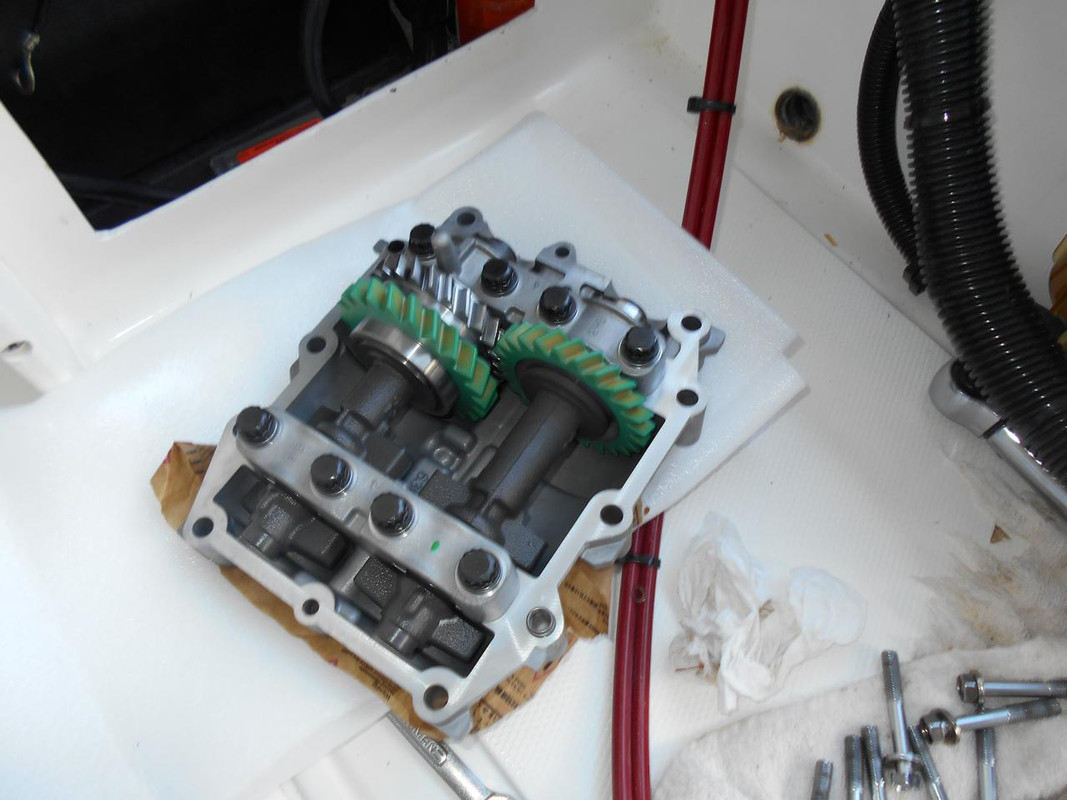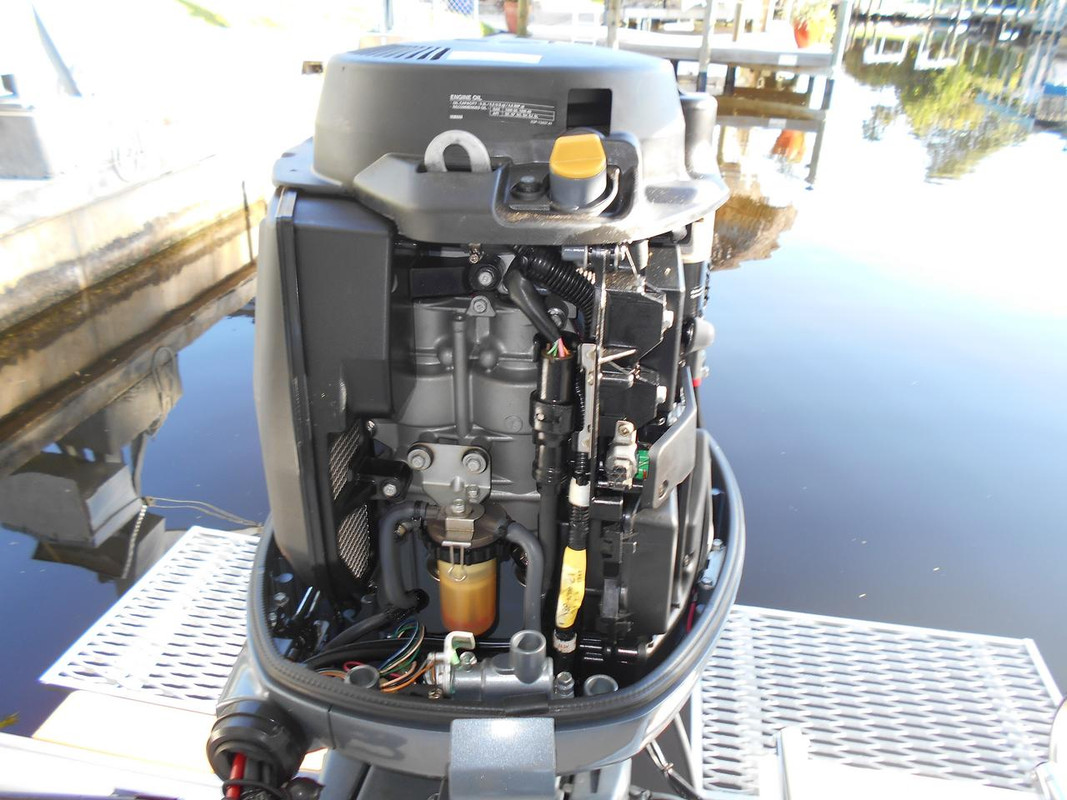Hi folks, Iíve was pointed in the direction of this forum in hope of fixing a long term engine problem Iíve been having. Itís stumped myself and 2 mechanics for the last 2 years and Iím finding myself at a bit of a loss. The following is as detailed an outline of the problem well as some theories and solutions we have already tried. All input welcome!.
Engine:
Yamaha 150 4 stroke which bought new with this zeppelin rib in 2009.
No previous issues, serviced and winterized yearly.
Fuel system:
The boat has an Internal fuel tank. The fuel line runs short distance up from tank connection to fuel filter in the console. From fuel filter the fuel line continues the length of the boat back to engine and into its internal smaller fuel filter as normal. There is also a hand primer bulb in console. All a very standard setup.
So... now to describe the problem:
The engine starts perfectly and gets up to full speed on flat water with no problems. On flat to small choppy conditions everything is 100% perfect.
The problem arises as the swell starts to build (only slightly) and the banging this causes begins to increase. I will be cutting through a very small sea state nicely and as it builds just a small bit she will come down from a wave with a slightly bigger bump and instantly the engine will change from itís nice perfect revs to a chug with a bit of a wobble that can be felt in the wheel. I can keep the throttle at the same position but the engine sound has completely changed to what I would describe as a rumble with an associated vibration. If I increase throttle speed the rumble and vibration or imbalance increase and she is under powered. If I bring the throttle back to neutral the rumbling/vibration decreases with revs but if I again increase power they increase also.
There is no clear method to fixing this issue on the water but the following have worked. 1) turn her off for a few seconds and restart. This doesnít always work as the problem can still be there upon restart. 2) after trying a restart drive at lower revs and bring up the speed. This some times works some times doesnít.
When doing number 2 above and driving at say 40% on the throttle (noting she is vibrating and under powered) she can suddenly kick in to being perfect again for a few seconds, then back to a wobble, then back to perfect on and off until the issue clears and sheís back to running smooth.. until the next wave of the right size.
One thing to note, when I say swell above I mean very small swell or even large wind chop. Just enough to get a bang vibration through the hull.
An engine fault does show by means of a slow flashing engine symbol which seems to flash every 5 seconds.
We ran engine diagnostics live while engaging the problem and it showed no faults but did indicate that the engine could be entering ďguardian modeĒ
Another thing Iíve noticed. When this issue kicks in and I return the throttle to neutral and there is still a wobble in the engine the idle revs seems smooth when I rise them.
What we have tried so far:
Theory 1) injectors:
The first mechanic removed injectors and cleaned and reinstalled them but the fix didnít seem to do much if anything. All in all we have tried this 4 times over the years and while it might seem like it had some effect at first the problem soon returns.
Theory 2) bad spark plugs, loose filters, fuel line issues:
All of these have been changed and checked multiple times except the fuel line we havenít run a new one. No dirt or water has shown up in any of the filters. The fuel tank does have a second outlet for a second engine, I changed the fuel lines to this and the problem was the exact same.
Theory 3) Apricots or loose debris in the fuel tank. I had trouble with this theory for 2 reasons. Firstly, if I bring the boat up to say 75% speed and then kink the fuel line by the tank, there is no effect on the engine for some time as it stall has all the fuel in the lines as well as the fuel filters etc. If something is suddenly stirring in the tank I canít see how it would have an instant effect on the engine as this problem kicks in instantly. My second issue is that no debris of any kind has ever shown up in the filters. I will try and test an external tank this week just to be sure.
Theory 4) electrics.
I was told that a bad connection in my isolater switch could be causing the issue which engages from the bang of a swell. I bypassed the switch and the problem continued as normal.
Other theories)
Air entering fuel line.
Wiring loom problem.
There have been periods where this issue was worse. During this times it would be there from the moment you start the engine and with an even more notable imbalance and associated chugging sound. Other times itís more resilient and takes a bigger bang to engage the issue.
There really isnít much rhyme or Rhythm to it. Just the fact that a small bang to the boat which she has always handled no problem now causes this issue.
Any help, theories or thoughts with this would be greatly appreciated. Itís been plaguing my now for 2 years and I donít know what else to do. The boat is seems so close to being perfect, I just need to solve this issue.
Please add any follow up questions below.
Thanks for reading,
Engine:
Yamaha 150 4 stroke which bought new with this zeppelin rib in 2009.
No previous issues, serviced and winterized yearly.
Fuel system:
The boat has an Internal fuel tank. The fuel line runs short distance up from tank connection to fuel filter in the console. From fuel filter the fuel line continues the length of the boat back to engine and into its internal smaller fuel filter as normal. There is also a hand primer bulb in console. All a very standard setup.
So... now to describe the problem:
The engine starts perfectly and gets up to full speed on flat water with no problems. On flat to small choppy conditions everything is 100% perfect.
The problem arises as the swell starts to build (only slightly) and the banging this causes begins to increase. I will be cutting through a very small sea state nicely and as it builds just a small bit she will come down from a wave with a slightly bigger bump and instantly the engine will change from itís nice perfect revs to a chug with a bit of a wobble that can be felt in the wheel. I can keep the throttle at the same position but the engine sound has completely changed to what I would describe as a rumble with an associated vibration. If I increase throttle speed the rumble and vibration or imbalance increase and she is under powered. If I bring the throttle back to neutral the rumbling/vibration decreases with revs but if I again increase power they increase also.
There is no clear method to fixing this issue on the water but the following have worked. 1) turn her off for a few seconds and restart. This doesnít always work as the problem can still be there upon restart. 2) after trying a restart drive at lower revs and bring up the speed. This some times works some times doesnít.
When doing number 2 above and driving at say 40% on the throttle (noting she is vibrating and under powered) she can suddenly kick in to being perfect again for a few seconds, then back to a wobble, then back to perfect on and off until the issue clears and sheís back to running smooth.. until the next wave of the right size.
One thing to note, when I say swell above I mean very small swell or even large wind chop. Just enough to get a bang vibration through the hull.
An engine fault does show by means of a slow flashing engine symbol which seems to flash every 5 seconds.
We ran engine diagnostics live while engaging the problem and it showed no faults but did indicate that the engine could be entering ďguardian modeĒ
Another thing Iíve noticed. When this issue kicks in and I return the throttle to neutral and there is still a wobble in the engine the idle revs seems smooth when I rise them.
What we have tried so far:
Theory 1) injectors:
The first mechanic removed injectors and cleaned and reinstalled them but the fix didnít seem to do much if anything. All in all we have tried this 4 times over the years and while it might seem like it had some effect at first the problem soon returns.
Theory 2) bad spark plugs, loose filters, fuel line issues:
All of these have been changed and checked multiple times except the fuel line we havenít run a new one. No dirt or water has shown up in any of the filters. The fuel tank does have a second outlet for a second engine, I changed the fuel lines to this and the problem was the exact same.
Theory 3) Apricots or loose debris in the fuel tank. I had trouble with this theory for 2 reasons. Firstly, if I bring the boat up to say 75% speed and then kink the fuel line by the tank, there is no effect on the engine for some time as it stall has all the fuel in the lines as well as the fuel filters etc. If something is suddenly stirring in the tank I canít see how it would have an instant effect on the engine as this problem kicks in instantly. My second issue is that no debris of any kind has ever shown up in the filters. I will try and test an external tank this week just to be sure.
Theory 4) electrics.
I was told that a bad connection in my isolater switch could be causing the issue which engages from the bang of a swell. I bypassed the switch and the problem continued as normal.
Other theories)
Air entering fuel line.
Wiring loom problem.
There have been periods where this issue was worse. During this times it would be there from the moment you start the engine and with an even more notable imbalance and associated chugging sound. Other times itís more resilient and takes a bigger bang to engage the issue.
There really isnít much rhyme or Rhythm to it. Just the fact that a small bang to the boat which she has always handled no problem now causes this issue.
Any help, theories or thoughts with this would be greatly appreciated. Itís been plaguing my now for 2 years and I donít know what else to do. The boat is seems so close to being perfect, I just need to solve this issue.
Please add any follow up questions below.
Thanks for reading,



Comment